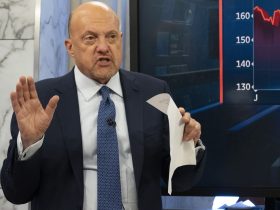“The flood of cash into money market funds over the past eight and a half months–a trend concentrated mainly in the U.S.–puts vehicles on course for record inflows of $1.5 trillion by the end of this year….”
“…the persistent flood of cash into such funds, which typically hold very low-risk assets such as short-dated government debt that are easy to buy and sell, reflected ‘one trillion dollars of doubt’ about the outlook for the economy and riskier assets.”
The “big questions haven’t been resolved — and until they are…it’s going to attract inflows.”
So writes Harriet Clarfelt in the Wall Street Journal.
Shelly Antoniewicz, deputy chief economist at the Investment Company Institute adds:
“Money market fund yields have kept pace with the rapid rise in short-term interest rates and are at their highest levels in over 15 years–making them incredibly attractive to investors.”
The major factors causing this situation?
The uncertainty relating to the future of the economy and the uncertainty relating to the future actions of the Federal Reserve.
More generally stated: the flow of money into global money markets is related to the radical uncertainty that exists within the world today.
In March 2023, $372 billion flooded into money market funds. A substantial amount of this movement was associated with the failure of the Silicon Valley Bank and others.
In August, a new record was set for the month with a $130 billion flow.
These high flows are expected to continue for the rest of the year.
What does this flow mean to me?
Well, this flow is just one more piece of evidence that supports my view that the financial system contains lots and lots and lots of liquidity.
The Federal Reserve may be shrinking the amount of securities it owns outright, it has reduced the amount of securities it owns outright by more than $1.0 trillion, but it still remains true that there are still trillions more funds in “cash” or “near-cash” assets.
For example, the commercial banking system holds around $3.3 trillion in cash assets.
The movement of these financial assets also confirms the feeling that investors are nervous about the future.
Investors are moving away from risky assets.
And, as I have written recently, there will be further movement away from risky assets in the near future.
But, what does this movement mean for monetary policy?
The “Big Picture” is this.
The Federal Reserve has moved over $1.0 trillion out of its securities portfolio.
The Federal Reserve seems intent on continuing to shrink its securities portfolio.
The Federal Reserve has raised its effective policy rate of interest up to 5.33 percent.
The policy rate of interest may be raised further in the future.
But, the fact still remains that there is lots and lots and lots of liquidity remaining in the financial system.
As is brought up by Ms. Clarfelt in her article”
“The big questions haven’t been resolved….”
Radical uncertainty still dominates the market.
Funds will continue to flow into less-risky assets.
Investors should heed what is taking place and act accordingly.
The policymakers cannot continue to “waffle” around about monetary policy…and, for that matter…fiscal policy.
The investor movement into shorter-term, less risky assets, may eventually force the issue.
However, government policymakers may continue to put off the issue of acting responsibly with respect to economic policies.
Investors need to speak up.
Read the full article here












Leave a Reply